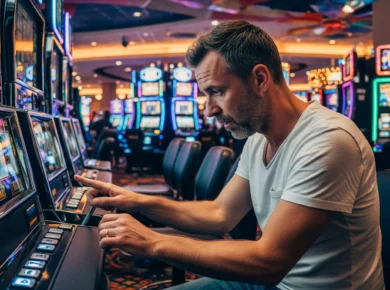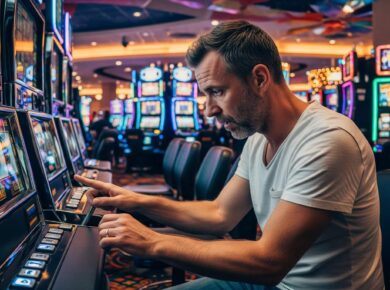You’d be surprised how many pundits still think virtual reality (VR) in the gambling world is a gimmick — smoke and mirrors to draw in wide-eyed rookies. But here’s what they miss: in the Asian markets, where tradition and tech converge in fascinating ways, VR casinos aren’t just a passing trend. They’re shaping the next era of immersive gaming across borders, cultures, and currencies. We’re beyond prototypes now; what’s coming is a full-blown digital evolution tailor-fitted to Asia’s peculiar regulatory landscape, diverse player profiles, and appetite for tech-savvy gaming experiences.
How cultural adaptation will make or break VR casinos
Let’s get one thing straight — what works in one market doesn’t translate wholesale across Asia. Novices often assume slapping a flashy headset on a player in Seoul will deliver the same experience as one in Kuala Lumpur or Mumbai. That’s short-sighted. Cultural gaming habits vary massively. For example, Japanese players are more inclined towards Pachinko-style interactivity, while Indian users lean on card-based strategy games. VR casino developers who build with local flavour — incorporating language, gesture controls, avatar customisation, and even temple-style lobbies — will see adoption soar. Those who don’t? They’ll only collect digital dust. A good lesson comes from observing early hybrid platforms like FairPlay app, where integrating local sports themes into betting UI made user engagement spike. VR needs to take that insight and extend it to full-fledged 3D immersion. Because in Asia, context isn’t just add-on garnish. It’s a deal-maker.
The tech nuts and bolts: what’s under the VR hood that matters
Before most newbies even talk interface, they forget backend architecture. VR casino stability, particularly in bandwidth-variable regions of Asia, depends heavily on edge computing, layered content streaming, and ultra-low-latency feedback loops. Forgetting any of these? That’s stumbling into a digital minefield. You need real-time rendering that doesn’t collapse under 4G conditions. A VR lobby stuttering mid-spin is worse than an empty table. We’ve seen systems crash during festive spikes — remember Diwali 2019 in certain VR pilot tests? They didn’t query enough regional server loads. Rookie mistake. There’s also the sensor integration. In my experience, gyroscopic drift destroys user immersion faster than a lousy RNG algorithm. Tracking precision is non-negotiable in Asia’s mobile-led markets, where many users stream VR via standalone headsets tethered by super apps. Without a 6DoF (six degrees of freedom) environment, you’re just pretending to be next-gen. For more insights on the technical requirements, see how FairPlay app integrated local features to enhance user experience.
Monetisation models Asia will respond to
This isn’t Vegas. Don’t assume subscription models or upfront payments will thrive here. Freemium and micro-transaction ecosystems dominate Asian gaming. The smart money is on hybrid models — like free access to social lobbies, but skill-based tables and real-money zones requiring tokenised buy-ins. If your monetisation hinges solely on deposits, you’re ignoring the social-gamification boom. It mirrors what happened on platforms such as 22Bet Côte d'Ivoire, where betting models cleverly catered to both low-stake casual players and serious punters using split-wallet architecture. Apply that logic in a VR lobby, and you’re cooking with gas.
The legislative chessboard: navigating regulation in a dynamic region
Any discussion about VR casinos in Asia that ignores compliance isn’t worth its bandwidth. From the Singapore Gambling Regulatory Authority’s strict oversight to India’s complex state-level interpretations of online betting, the red tape isn’t soft. Players expecting one-size-fits-all licensing are setting themselves up for audits — or worse, blacklisting. But here’s an interesting angle: regulators tend to favour platforms that maintain provable fairness, user ID tracking, and responsible gambling alerts. VR has the potential to outperform in all three. You can monitor user gazes to detect fatigue, track physical frustrations in-session, and even throttle gaming intensity based on biometric feedback. Try doing that with a static browser interface. For more on regulatory approaches, see how FairPlay app navigated local compliance. Don’t ignore models from early movers like the Philippines, where the regulator PAGCOR has historically shown openness to tech pilots under scrutiny. If your platform can produce granular reports and geo-fence responsibly, there’s room to negotiate. Licensing might be hyperspecific, but it’s not impossible — if you treat the legal framework as part of the design blueprint, not a retrofitting exercise.
Education and onboarding: preparing users for the leap
There’s an unsaid truth most analysts gloss over — it’s not enough to build the tech. You’ve got to train the user. Most Asian players are sharp, mobile-literate, and aggressively social. But VR casino interfaces are a different beast. Navigation needs to be intuitive, tutorials bite-sized, and onboarding seamless. That means controller-less options, gesture training, and voice-native commands that accommodate local dialects. If you ignore onboarding, you’ll end up with beautiful ghost towns — all shimmer, no action. Need proof? Look at online casino behaviour data summarised by Betspin.com, which shows user dropout peaking at the post-signup phase. That’s your red flag: if traditional formats struggle to retain, then complex VR flows don’t stand a chance without generous and clever onboarding.
Outlook: where realism meets regulation and cultural relevance
Here’s the bottom line. The road ahead for VR casinos in Asian markets isn’t just technical. It’s cultural, regulatory, and financial all at once. Success will hinge on who can blend immersive realism with local flair, marry legal agility with bulletproof backend engineering, and educate players better than ever before. Expect to see early traction in markets like South Korea and Taiwan, where tech adoption is lightning-fast and legislative barriers lower. Mainland China? That’ll be a tougher nut, unless platforms operate offshore with region-specific UI wrappers. Meanwhile, South Asia will force innovation in payment systems and hybrid gameplay to suit a mobile-first player base. One closing thought — don’t get swept up chasing shiny pixels. At its core, gambling — even in 3D space — is built on trust, emotion, and engagement. You can layer all the VR you like, but if your blackjack AI doesn’t feel fair or your prize redemption is a nightmare, players will walk. So build smarter, not flashier. By weaving traditional player instincts with cutting-edge immersion, the future of VR casinos in Asia isn’t just promising — it’s inevitable.























